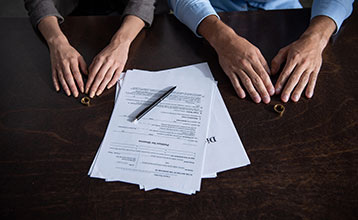When does an asset become a matrimonial asset in divorce?
A common question many clients ask is:
What about assets acquired by me solely before marriage? Does it become a matrimonial asset that my spouse can claim?
Section 112(10) of the Women’s Charter defines a ‘matrimonial asset’ as:
- any asset acquired before the marriage by one party or both parties to the marriage:
- ordinarily used or enjoyed by both parties or one or more of their children while the parties are residing together for shelter or transportation or household, education, recreational, social or aesthetic purposes; or
- which has been substantially improved during the marriage by the other party or by both parties to the marriage; and
- any other asset of any nature acquired during the marriage by one party or both parties to the marriage,
- but does not include any asset (not being a matrimonial home) that has been acquired by one party at any time by gift or inheritance and that has not been substantially improved during the marriage by the other party or by both parties to the marriage.
Therefore, under the Women’s Charter, an asset that one party had acquired before marriage becomes a ‘matrimonial asset’ if it was:
- ordinarily used or enjoyed by both parties or one or more of their children while the parties are residing together for shelter or transportation or for household, education, recreational, social or aesthetic purposes.
OR
- which has been substantially improved during the marriage by the other party or by both parties to the marriage.
There have been earlier decisions (such as BGT v BGU [2013] SGHC 50) in which the courts have ruled that where parties no longer lived in a property, that property ceases to be a matrimonial asset there Court of Appeal was recently s asked to consider this question in TND v TNC [2017] SGCA 34.
The wife had argued that the meaning of s 112(10)(a)(i) of the Women’s Charter is that once an asset becomes a matrimonial asset, it remains a matrimonial asset. The husband, however, contended that the Bayshore property was not a matrimonial asset because the family had lived there for a period of only 15 months.
The Court of Appeal had to consider whether an asset acquired before marriage (in this case, a Bayshore condo) that is “ordinarily used or enjoyed” during the marriage for one of the domestic purposes listed at the end of s 112(10) but for only a short while will still be considered a “matrimonial asset” when the marriage ends many years later.
The Court of Appeal had no hesitation in agreeing with the wife that the Bayshore property is a matrimonial asset, and thus can be claimed by the wife.
What this case means for you
- s 112(10)(a)(i) of the Women’s Charter covers not only the parties’ last place of residence before the divorce as being a matrimonial asset – but it also covers a property which the parties had used as a matrimonial home for a long period but no longer staying there at the time of divorce.
- Suppose the parties live for 25 years in a property acquired before their marriage, using it as their matrimonial home. After their grown children leave the nest, they move into a small apartment which was also acquired before the marriage. Two years later, the marriage breaks down and they subsequently divorce. Section 112(10)(a)(i) of the Women’s Charter will treat the first property as also a matrimonial asset. There is no reason why the parties’ last place of residence for two years is treated as a matrimonial asset while the property used as the cradle of the family for 25 years loses its status as a matrimonial asset simply because the parties have stopped living there.
- The treatment must be decided on the precise facts and circumstances of the case before the court.
- While the Court of Appeal has now ruled that an asset can still remain as a matrimonial asset even if parties no longer live there, that in itself would not mandate that such an asset has to be divided in exactly the same way as assets acquired during the marriage would be. A court confronted with assets that have become matrimonial assets because of the operation of s 112(10) would have the discretion to divide it in such manner as may be most equitable bearing in mind the nature of the asset, how it was paid for (i.e., whether it was partly paid for during the course of the marriage) and the length of time during which the parties ordinarily used or enjoyed it during the marriage.
The Court of Appeal thus ruled that the Bayshore property was a matrimonial home as they had lived there as a family. But since it was used for only 15 months, the husband would get a higher share as his direct contributions were higher.
In conclusion – when should matrimonial assets be valued?
Regarding the division of matrimonial assets for parties going through a divorce, a pertinent question re: When is the operative date to determine the pool of assets and value the matrimonial assets?
This is an important question for 3 reasons:
- Even before the divorce has commenced, parties may already have separated and no longer may have any intention to jointly accumulate matrimonial assets.
- The divorce process in Singapore is a 2 step process. Parties must first obtain Interim Judgment to end the marriage, and THEN, the court proceeds to hear and decide on ancillary issues like division of assets.
- The divorce process in Singapore generally takes one year to conclude. It is generally concluded when the court conducts the ancillary matter hearing to decide on ancillary issues.
While the separation or divorce process is played out, the value of assets may fluctuate. Indeed, assets may increase or decrease due to bonuses awarded crystallised share options or the stock and property exigencies.
You can see the uppermost question that most of our clients have: What then is the cut-off date for determining the asset pool and valuing the matrimonial assets?
There are 4 possibilities:
- At the time of separation.
- At the date they file for divorce.
- At the date of Interim Judgment.
- At the date of the hearing of the ancillary matters.
In the recent Court of Appeal case of TND v TNC [2017] SGCA 34, the Court of Appeal has reiterated that generally, “the ancillary matter hearing date should be used for purposes of valuation of the matrimonial assets.”
This means that unless parties can satisfy the court to use another date, all matrimonial assets will be valued at the end of the divorce process, i.e, at the hearing of the ancillary matters. Family litigants should therefore be aware of this significant decision.


